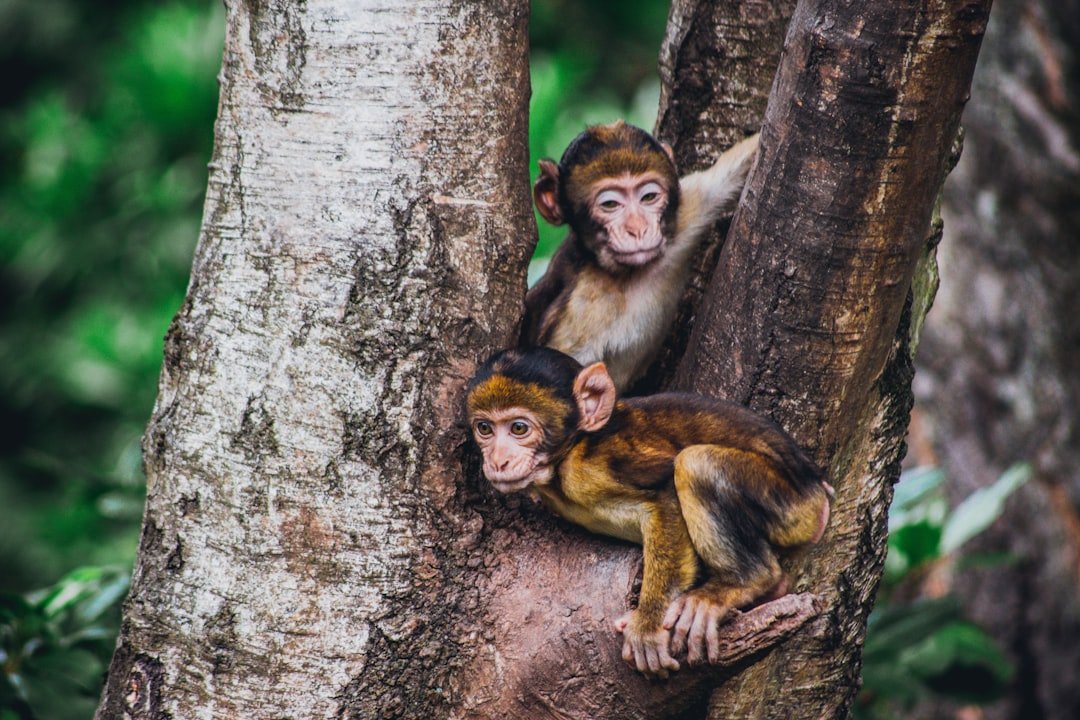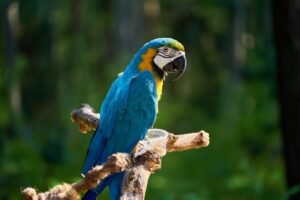The kakapo, also called the owl parrot, is a distinctive bird species native to New Zealand. It is the world’s only flightless parrot and the heaviest, weighing up to 4 kilograms. Kakapos are nocturnal and ground-dwelling, adapting to a lifestyle unlike most other parrot species.
They possess a unique musky odor used for mate attraction and territory marking. Critically endangered, the kakapo population has dwindled to approximately 200 individuals in the wild, making it one of the rarest bird species globally. This status has prompted intensive conservation efforts to protect and preserve the species.
The kakapo’s singular characteristics, including its flightlessness, nocturnal habits, and endangered status, contribute to its special position in avian biology and conservation. As the sole member of its genus, the kakapo represents a unique evolutionary lineage, further emphasizing the importance of its preservation for biodiversity and scientific study.
Key Takeaways
- The Kakapo is a critically endangered flightless parrot native to New Zealand, known for its unique status as the world’s heaviest parrot and its nocturnal behavior.
- The Kakapo is a large, rotund bird with a moss-green plumage, a distinct facial disc, and a strong, musty odor.
- The Kakapo is known for its lek breeding system, where males gather in a central location and compete for the attention of females through booming calls and display behaviors.
- The Kakapo is a herbivore, feeding primarily on native plants, fruits, seeds, and leaves, and occasionally on insects.
- The Kakapo has a slow reproductive rate, with females only breeding every 2-4 years, and their eggs and chicks are highly vulnerable to predation and environmental factors.
- The Kakapo is the focus of intensive conservation efforts in New Zealand, including predator control, habitat restoration, and a managed breeding program.
- The Kakapo holds significant cultural importance to the Māori people of New Zealand, who view the bird as a taonga (treasure) and a symbol of their connection to the natural world.
The Kakapo’s Physical Characteristics
Camouflage and Adaptations
The kakapo’s plumage is predominantly moss green, providing excellent camouflage in its natural forest habitat. Its facial disc, similar to that of an owl, helps to funnel sound to its ears, aiding in its nocturnal activities. The kakapo’s beak is curved and powerful, allowing it to crack open tough nuts and seeds, which form a large part of its diet.
Unique Communication and Marking
In addition to its physical appearance, the kakapo is also known for its unique musky odor, which is used for communication and marking territory. This distinctive scent is produced by specialized glands located on the bird’s chest.
Ground-Dwelling Abilities
The kakapo’s strong legs and feet are adapted for climbing and walking on the forest floor, as it is primarily a ground-dwelling bird. These physical characteristics make the kakapo a truly remarkable and unusual parrot species, deserving of attention and conservation efforts to ensure its survival.
The Kakapo’s Behavior and Habits

The kakapo’s behavior and habits are as unique as its physical characteristics. Unlike most parrots, the kakapo is primarily nocturnal, meaning it is most active during the night. This behavior has evolved as an adaptation to avoid predators and to take advantage of the abundance of food sources available at night.
The kakapo is also known for its distinctive booming call, which can carry for long distances through the forest. This call is used by males to attract females during the breeding season and is a key part of their courtship display. In addition to its nocturnal habits and booming call, the kakapo is also known for its solitary nature.
It is a solitary bird that prefers to live alone in its territory, only coming together with other kakapos during the breeding season. The kakapo’s musky odor is another important aspect of its behavior, as it is used for communication and marking territory. These unique behaviors and habits make the kakapo a truly fascinating and special bird, deserving of conservation efforts to ensure its survival for future generations.
The Kakapo’s Diet
| Food | Percentage of Diet |
|---|---|
| Fruit | 61% |
| Leaves | 16% |
| Seeds | 13% |
| Flowers | 8% |
| Bark | 2% |
The kakapo has a specialized diet that consists mainly of plants, seeds, fruits, and leaves. It is known for its ability to climb trees in search of food, using its strong legs and feet to navigate through the forest canopy. The kakapo’s powerful beak is well-suited for cracking open tough nuts and seeds, which form a large part of its diet.
It also feeds on a variety of native plants and fruits found in its natural habitat, making it an important seed disperser for many plant species. In addition to its plant-based diet, the kakapo will also consume insects and small invertebrates when available. This diverse diet allows the kakapo to adapt to changes in food availability throughout the year, ensuring its survival in its natural environment.
The kakapo’s specialized diet is an important aspect of its ecology and plays a crucial role in maintaining the balance of its ecosystem. Conservation efforts aimed at protecting the kakapo must also take into account the preservation of its natural food sources to ensure its long-term survival.
The Kakapo’s Reproduction and Lifecycle
The kakapo’s reproduction and lifecycle are crucial aspects of its conservation status, as they directly impact the population size and genetic diversity of this critically endangered species. The breeding season for kakapos occurs every 2-4 years when certain environmental conditions are met, such as abundant food sources and favorable weather patterns. During this time, male kakapos will gather in specific areas known as leks, where they perform their distinctive booming calls to attract females.
Once a female has chosen a mate, she will lay 1-4 eggs in a carefully constructed nest on the forest floor. The female will then incubate the eggs for around 30 days before they hatch. The chicks are born helpless and rely on their mother for warmth and food until they are old enough to fend for themselves.
The kakapo’s slow reproductive rate and low breeding frequency make it particularly vulnerable to threats such as habitat loss and predation. Conservation efforts aimed at protecting the kakapo must prioritize the preservation of its breeding habitats and the implementation of measures to reduce threats from introduced predators such as rats, stoats, and cats. By understanding the reproductive biology and lifecycle of the kakapo, conservationists can develop targeted strategies to support breeding success and increase the population size of this critically endangered species.
The Kakapo’s Conservation Status

Habitat Loss and Predation: Ongoing Threats
Conservation efforts have been ongoing for several decades, focusing on habitat restoration, predator control, captive breeding programs, and public awareness campaigns to raise support for kakapo conservation. While these efforts have resulted in some positive outcomes, with small increases in population size observed in recent years, the kakapo remains at high risk of extinction due to ongoing threats from habitat loss and predation.
Conservation Priorities: A Multi-Faceted Approach
Continued conservation efforts are essential to ensure the long-term survival of the kakapo. This includes ongoing monitoring of wild populations, expansion of predator control measures, genetic management of captive populations, and research into disease management.
A Glimmer of Hope: Saving the Kakapo from Extinction
By addressing these key conservation priorities, there is hope that the kakapo can be saved from extinction and thrive once again in its natural habitat.
The Kakapo’s Cultural Significance
The kakapo holds significant cultural importance for the indigenous Māori people of New Zealand. Known as “kākāpō” in Māori language, this bird has been revered as a taonga (treasure) by Māori communities for centuries. Its unique status as a flightless parrot with nocturnal habits has made it a symbol of mystery and wonder in Māori folklore and traditions.
The kakapo’s cultural significance is also reflected in Māori art, storytelling, and traditional knowledge systems. It has been depicted in carvings, paintings, and songs as a symbol of strength, resilience, and connection to the natural world. The Māori people have long recognized the importance of protecting the kakapo and its natural habitat as part of their cultural heritage and spiritual beliefs.
In recent years, there has been a growing recognition of the importance of incorporating indigenous knowledge and perspectives into conservation efforts for the kakapo. Collaborative partnerships between Māori communities and conservation organizations have led to innovative approaches that integrate traditional ecological knowledge with modern conservation practices. This inclusive approach not only strengthens conservation efforts but also honors the cultural significance of the kakapo to the Māori people.
In conclusion, the kakapo is a truly remarkable and unique bird with special status in the avian world. Its physical characteristics, behavior, diet, reproduction, conservation status, and cultural significance all contribute to its exceptional nature. Efforts to conserve and protect this critically endangered species are essential to ensure its survival for future generations.
By understanding and appreciating the remarkable qualities of the kakapo, we can work together to secure a brighter future for this extraordinary bird.
If you’re interested in learning more about endangered species and conservation efforts, you might want to check out this article about the passing of Sheikh Nawaf Al-Ahmad Al-Jaber Al-Sabah, the Emir of Kuwait. It discusses the impact of his death on the country and the future of its leadership, shedding light on the importance of preserving and protecting unique and vulnerable species like the kakapo owl parrot.
FAQs
What is a kakapo owl parrot?
The kakapo owl parrot, also known as the night parrot, is a species of large, flightless, nocturnal parrot native to New Zealand.
Why is the kakapo owl parrot called a “owl parrot”?
The kakapo owl parrot is called an “owl parrot” due to its owl-like appearance, nocturnal habits, and ability to climb trees.
What is the conservation status of the kakapo owl parrot?
The kakapo owl parrot is classified as critically endangered, with only around 200 individuals remaining in the wild.
What are the main threats to the kakapo owl parrot?
The main threats to the kakapo owl parrot include habitat destruction, introduced predators such as rats and cats, and low reproductive rates.
What is being done to conserve the kakapo owl parrot?
Conservation efforts for the kakapo owl parrot include predator control, habitat restoration, and a managed breeding program to increase the population.
What is the diet of the kakapo owl parrot?
The kakapo owl parrot primarily feeds on native plants, fruits, seeds, and leaves, as well as some insects.
How does the kakapo owl parrot communicate?
The kakapo owl parrot communicates through a variety of sounds, including booming calls, chattering, and whistling, especially during the breeding season.




















+ There are no comments
Add yours